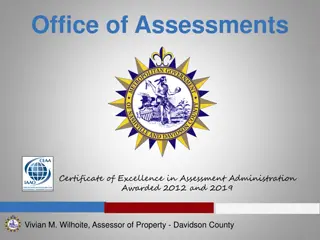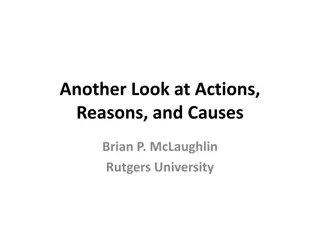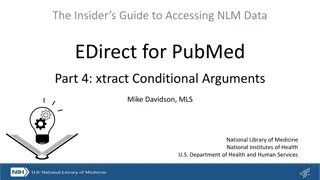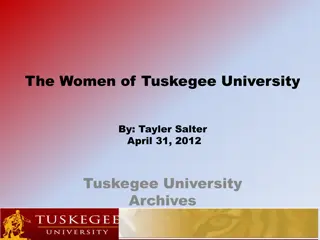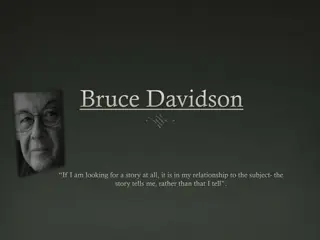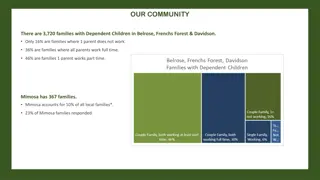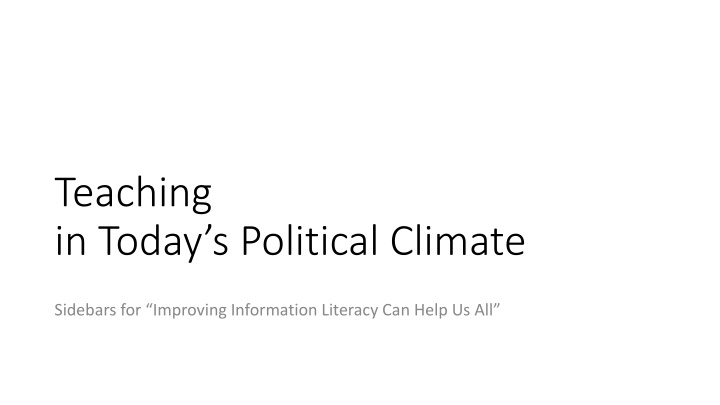
Improving Information Literacy in Today's Political Climate with Sidebars
Enhance your information literacy in the current political landscape through sidebars focusing on acknowledging bias, reflection, empathy, and evaluation. Become a more informed consumer of statistics and learn to identify cognitive biases and the importance of skepticism in evaluating information.
Download Presentation

Please find below an Image/Link to download the presentation.
The content on the website is provided AS IS for your information and personal use only. It may not be sold, licensed, or shared on other websites without obtaining consent from the author. If you encounter any issues during the download, it is possible that the publisher has removed the file from their server.
You are allowed to download the files provided on this website for personal or commercial use, subject to the condition that they are used lawfully. All files are the property of their respective owners.
The content on the website is provided AS IS for your information and personal use only. It may not be sold, licensed, or shared on other websites without obtaining consent from the author.
E N D
Presentation Transcript
Teaching in Today s Political Climate Sidebars for Improving Information Literacy Can Help Us All
Political Climate Our Bubbles Information Literacy Acknowledgement Reflection Empathy Evaluation LSP 121 Become Informed Consumers of Statistics The assignment Skepticism Cognitive Bias Funky an example Correlation is Not Causation
Bubbles Everybody's in a Bubble, and That's a Problem In politics as well as business, people are shaped by who they see and who they don't. The Atlantic Derek Thompson Jan 25, 2017 https://www.theatlantic.com/business/archive/2017/01/ameri ca-bubbles/514385/ In Virginia, a state of political separation: Most Clinton voters don t know any Trump voters, and vice versa By Laura Vozzella and Emily Guskin Washington Post - Virginia Politics September 14, 2016 https://www.washingtonpost.com/local/virginia-politics/in-virginia-a- state-of-political-separation-most-clinton-voters-dont-know-any-trump- voters-and-vice-versa/2016/09/14/f617a2b8-75e8-11e6-b786- 19d0cb1ed06c_story.html?noredirect=on&utm_term=.9a2b05eb0d01
Information Literacy identify find, evaluate, apply, and acknowledge https://prezi.com/s7xnb-bgrujk/5-components-of-information- literacy/ 4
Information Literacy http://youtu.be/1ronp6Iue9w 5
LSP 121 Quantitative Reasoning and Technological Literacy II Liberal Studies Program First-Year Program
LSP 121 S9 - Statistics That Deceive
Do you believe everything you hear or read ?
The "experts" wouldn't lie would they ?
Be an informed consumer of statistics Be skeptical Ask questions Who says so ? How do they know ? What s missing ? Did somebody change the subject ? Does it make sense ? Whose agenda is being served ? 11
Cognitive Biases a systematic pattern of deviation from norm or rationality in judgment. Haselton, M. G.; Nettle, D. & Andrews, P. W. (2005) In D. M. Buss (Ed.), The Handbook of Evolutionary Psychology: Hoboken, NJ, US: John Wiley & Sons Inc. pp. 724 746. https://en.wikipedia.org/wiki/Cognitive_bias https://en.wikipedia.org/wiki/List_of_cognitive_biases 12
Creating statistical evidence to support a point of view An example Funky this was really easy to create from existing sources 13
Pearson R Correlation via SPSS Correlations Number of Identity Theft Victims Immigration .935** Immigration Pearson Correlation 1 Sig. (2-tailed) .000 N 51 51 .935** Number of Identity Theft Pearson Correlation 1 Sig. (2-tailed) .000 Victims N 51 51
LSP 121 Assignment Question in 2016 3. Statistics In Everyday Use Find three articles in the popular media (e.g. newspaper, web-site) that include statistics (presented as numbers or as graphics or in both ways.) These should be three separate articles/sources, not three examples of statistics in one article A. For each article/statistic: 1. Summarize the article and the statistic(s) it contains briefly, or copy the article, including the statistic(s) you are critiquing, into your Word document. 2. Include a citation of the source of the article. B. For each article/statistic: 1. Do you think that the statistic or the way it is used/presented is deceptive? 2. Why or why not? 3. What is your evidence?
LSP 121 Assignment Question in 2018 4. Statistics In Everyday Use Choose three articles/postings that you have recently read in the popular media (e.g. newspaper, web-site, blog) that include statistics (presented as numbers or as graphics or in both ways.) These should be three separate articles/postings, not three examples of statistics in one article/posting A. For each article/posting: 1. Summarize the article/posting and the statistic(s) it contains briefly, or copy the article/posting, including the statistic(s) you are critiquing, into your Word document. 2. Include a citation of the source of the article/posting. B. For each article/posting: 1. Do you think that the statistic(s) it contains or the way they are used/presented is deceptive? 2. Why or why not? 3. What is your evidence?
mdavidson@cdm.depaul.edu Thank you!





